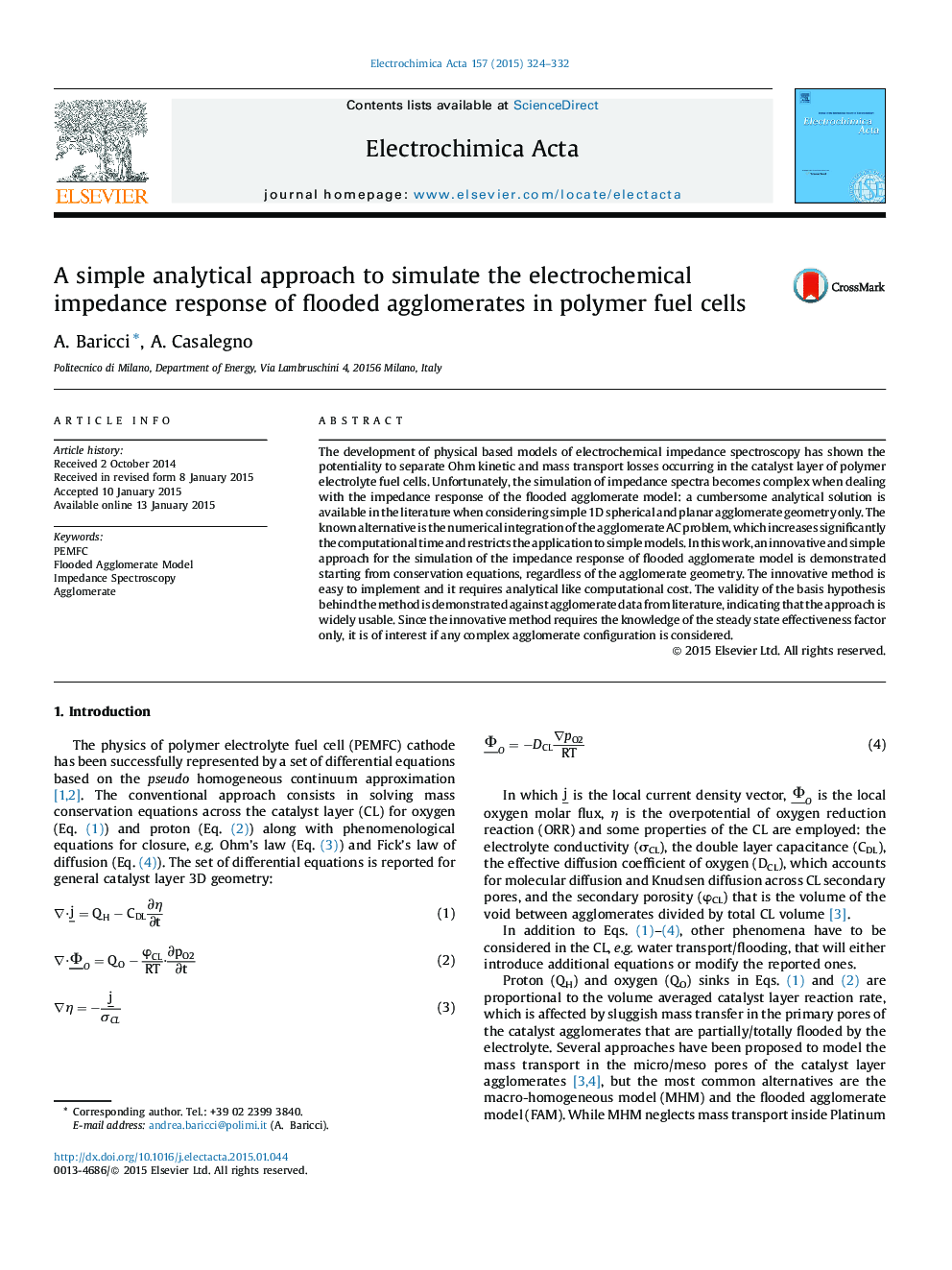| Article ID | Journal | Published Year | Pages | File Type |
|---|---|---|---|---|
| 184647 | Electrochimica Acta | 2015 | 9 Pages |
•Definition of AC effectiveness factors to simulate the impedance response of FAM.•FAM impedance response is not affected by oxygen accumulation in the agglomerate.•AC Effectiveness factors are derived from steady state effectiveness factors.•Flooded agglomerates increase the charge transfer resistance at high current.•Specific experiments lead to estimate agglomerate radius in the order of 200 nm.
The development of physical based models of electrochemical impedance spectroscopy has shown the potentiality to separate Ohm kinetic and mass transport losses occurring in the catalyst layer of polymer electrolyte fuel cells. Unfortunately, the simulation of impedance spectra becomes complex when dealing with the impedance response of the flooded agglomerate model: a cumbersome analytical solution is available in the literature when considering simple 1D spherical and planar agglomerate geometry only. The known alternative is the numerical integration of the agglomerate AC problem, which increases significantly the computational time and restricts the application to simple models. In this work, an innovative and simple approach for the simulation of the impedance response of flooded agglomerate model is demonstrated starting from conservation equations, regardless of the agglomerate geometry. The innovative method is easy to implement and it requires analytical like computational cost. The validity of the basis hypothesis behind the method is demonstrated against agglomerate data from literature, indicating that the approach is widely usable. Since the innovative method requires the knowledge of the steady state effectiveness factor only, it is of interest if any complex agglomerate configuration is considered.
